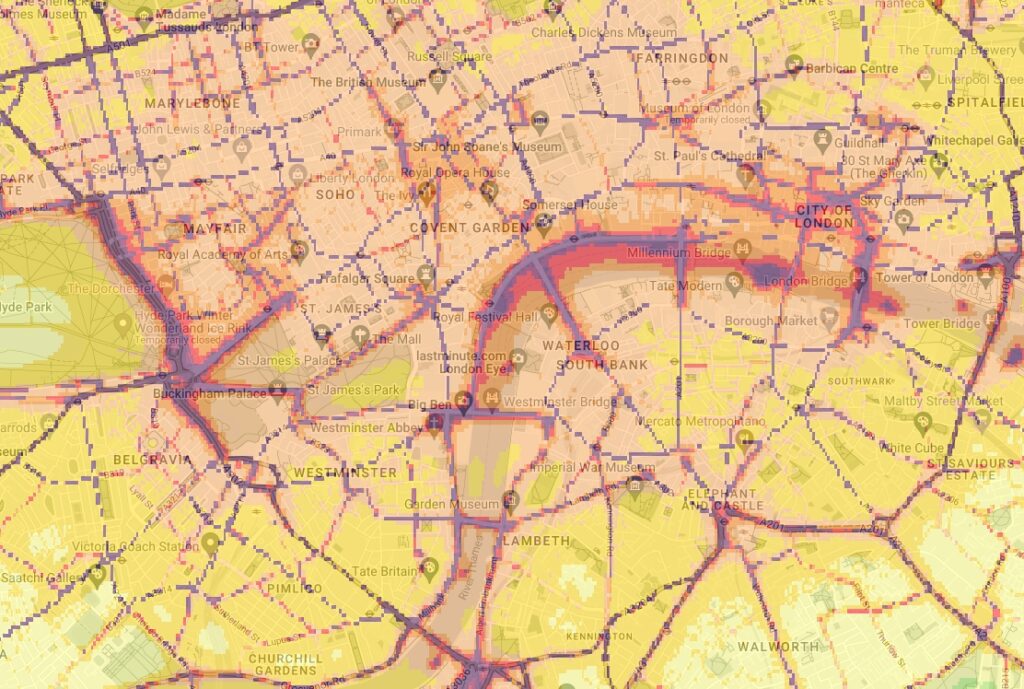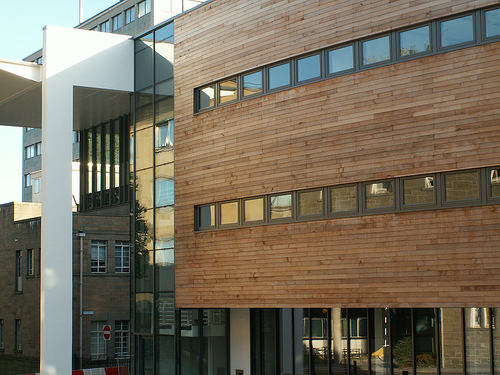Critique of Michael Gove’s Nutrient Neutrality Announcement
Below you will find commentary of government plans to reform nutrient neutrality laws. Comments are
Nutrient Neutrality Announcement
Over 100,000 homes held up due to defective EU laws will be unblocked between now and 2030, delivering an estimated £18 billion boost to the economy, the government has announced today (29 August 2023).
- Comment: Not all of the nutrient sensitive sites are European sites, some such as SSSIs are international.
Currently, legacy EU laws on nutrient neutrality are blocking the delivery of new homes, including cases where planning permission has already been granted. Nutrients entering our rivers are a real problem, but the contribution made by new homes is very small. These laws which originate from Brussels put a block on new homes in certain areas – taking away control over what is built, and when, from local people.
- Comment: One house will make a small contribution. 100,000 homes will make a lkare contribution.
Through an amendment to the Levelling Up and Regeneration Bill, the government will do away with this red tape and allow for the delivery of more than 100,000 new homes desperately needed by local communities. Thanks to the government’s action, it is expected that developers could begin construction on these homes in a matter of months.
- Comment: This is presented as though the whole of society will benefit from this reform. One of the main obstacles to people buying new homes is high interest rates, and high living costs. This is nothing to do with nutrients.
The move comes alongside new environmental measures that will tackle pollution at source and restore habitats. This includes significantly expanding investment in and evolving the Nutrient Mitigation Scheme run by Natural England, doubling investment to £280 million to ensure it is sufficient to offset the very small amount of additional nutrient discharge attributable to up to 100,000 homes between now and 2030.
- Comment: On a rural waste treatment works around 700m2 of wetland is required to offset 1 home. To offset 100,000 new homes we will require 70,000,000m2. Wetland at very best case costs around £4 per m2 to buy land and create. And as such the this extra £140 million is around half the amount required.
Natural England will work with local authorities, the private sector and others to tackle nutrient pollution and work towards the long-term health and resilience of the river systems. The government intends to work with the house building industry to ensure that larger developers make an appropriate and fair contribution to this scheme over the coming years, and is discussing the right structure and approach with the Home Builders Federation.
- Comment: Natural England have had 3 years to do this already and have not delivered. I am writing this from a small developers perspective because that is who we deal with. But Natural England have taken in some case 3 years to make a decision on some the sites we are working on, which is too slow. This may because of the liabilities that arise from breach of ecological laws.
The government will then accelerate work on full site restoration through further work on new Protected Site Strategies, which Natural England will draw up in partnership with local communities to set protected sites on the path to recovery in the most affected catchments with the highest housing demand.
Secretary of State for Levelling Up, Housing and Communities, Michael Gove MP said:
We are committed to building the homes this country needs and to enhancing our environment. The way EU rules have been applied has held us back. These changes will provide a multi-billion pound boost for the UK economy and see us build more than 100,000 new homes.
Protecting the environment is paramount which is why the measures we’re announcing today will allow us to go further to protect and restore our precious waterways whilst still building the much-needed homes this country needs.
We will work closely with environmental agencies and councils as we deliver these changes.
- Comment: Not all of this is EU law. Some is international. The phosphate credit market (of which are we are part) will also provide a multi billion pound boost to the economy. These credits scheme also benefit farmers, smaller developers and homeowners, who are often eligible for free septic tank upgrades, or 6 figure sums from changing the way their farm operates. An open phosphate credit market spreads wealth around.
Secretary of State for Environment, Food and Rural Affairs, Thérèse Coffey said:
These new plans will cut nutrients and help support England’s precious habitats whilst unlocking the new homes that local communities need.
We are going to tackle the key causes of nutrients at source with over £200 million of funding to reduce run off from agriculture and plans to upgrade waste water treatment works through conventional upgrades, catchment approaches and nature-based solutions.
- Comment: This sounds like a tax payer funded bail out of water companies. With taxpayer money going to water companies so they can upgrade their water works. They should have course made less profit and done this work years ago.
This builds on the key commitments made in our 5-year strategy – our Environmental Improvement Plan – as well as our Plan for Water which brings forward more investment, stronger regulation and tougher enforcement to protect our rivers.
Alongside the amendments tabled to the Levelling Up and Regeneration Bill, which is currently in the House of Lords, the government has announced a series of new environmental measures to restore our protected sites, including a commitment to offset the very small amount of additional nutrients attributable to up to 100,000 new homes. Beyond the immediate action that will be driven by Natural England’s Nutrient Mitigation Scheme, this package includes:
Committing to further work on developing Protected Sites Strategies in the catchments most impacted by nutrient neutrality and with the most acute housing pressures. These bespoke plans will help identify specific action needed to restore habitats and species in specific areas. The aim is to agree and implement tangible actions to reduce pollution at source, through nature-based solutions such as wetlands and new innovations.
Reducing nutrients entering the water from new development with new laws expected to drive significant investment from water companies to upgrade wastewater treatment works to the highest technical standards by 2030. The next water company investment cycle will be among the biggest and most ambitious ever.
- Comment: Who is paying for those upgrades. And how will it impact on water bills.
Conducting at least 4,000, inspections on farms each year – making sure that slurry and other sources of nutrients are being handled in a way that minimises pollution of the water environment.
Reducing nutrient run off into our rivers from farms – supporting our farmers by investing £200 million in grants for improved slurry storage infrastructure and precision spreading equipment. This makes a further £166 million available for new investment into slurry infrastructure.
- Comment: This is already implemented. But it is difficult to get planning permission for improved slurry storage owing to the calculation methodologies employed in assessing their impact.
Investing £25 million to drive innovation to help farmers manage plant and soil nutrients. This will increase resilience, reduce input costs and improve productivity as part of a more circular economy for nutrients. The effective use of waste has the potential to create new revenue streams. We will also consult this year on modernising our fertiliser product standards to drive increased use of organic and recycled nutrients.
Introducing from 2024 payment premiums into our environmental land management schemes. This will accelerate take up of certain high priority options, including those that provide benefits for water quality.
Publishing a River Wye action plan this autumn to tackle the unique issues in Herefordshire.
Ensuring new homes built do not place undue stress on already stressed local water networks by consulting this year on new requirements where needed for Sustainable Drainage Solutions to reduce pressure on storm overflows from new homes and flood risk.
All of this builds on our Plan for Water, which sets out measures to transform and integrate our water system, address sources of pollution and boost our water supplies through more investment, stronger regulation, and tougher enforcement.
Our nutrient reduction plan will also help deliver on our legal target to reduce nutrient runoff from agriculture by at least 40% by 2038, and by 15% in nutrient neutrality catchments by 2028, and to reduce phosphorus loadings from wastewater by 80% by 2038, and by 50% by 2028.
- Comment: How will this be delivered without increasing dependency on food imports.
The government has a strong record on housebuilding, with more than 2.2 million homes delivered since 2010. The Secretary of State for Housing recently set out his long-term plan to go even further and unlock more development across the country.
Changes to nutrient neutrality rules and wider planning reforms will allow the government to go even further towards its target of delivering one million homes this Parliament.
The environmental measures announced today lead on from the government’s Plan for Water published in April which set out actions to address all sources of water pollution, including through accelerating £2.2 billion of water company infrastructure investment to prevent storm overflow discharges and improve drought resilience, and unlimited fines for environmental polluters.
- Comment: Who is paying for these upgrades. Do this shift financial burden from house builders and water companies on to tax paper / bill payer.
The current EU-derived regulations have required Natural England to issue guidance to 62 local authority areas that new development must be ‘nutrient neutral’ in their area, including Somerset, Norfolk, Teesside, Kent, Wiltshire and the Solent. This has blocked or delayed new development – including around a large number of homes that already have planning permission and local communities have already said they want.
The amendment today will remove this requirement, allowing Natural England greater freedom to develop catchment-specific solutions to the causes of nutrient pollution in partnership with each community, supported by government and private investment.
- Comment: Natural England already have that ability.
SWEL’s Opinion
The problem with nutrient neutrality is not the law, or the lack of solutions. The problem stems from:
- Lack of staff in Councils and Natural England
- Lack of effective decision making by Councils and Natural England
We have been offering solutions, for over 3 years. However, there has been little urgency on the part of planning officials and natural england to approve these, or to provide advice. In situation where we have found a way through, it has taken years to do so.
Some ideas, that might work:
- Doubling staffing levels of National England
- Doubling Staffing Levels in Planning Offices
- Pay Natural England extra money for each home passed off.
- Leave the rules as they are.




